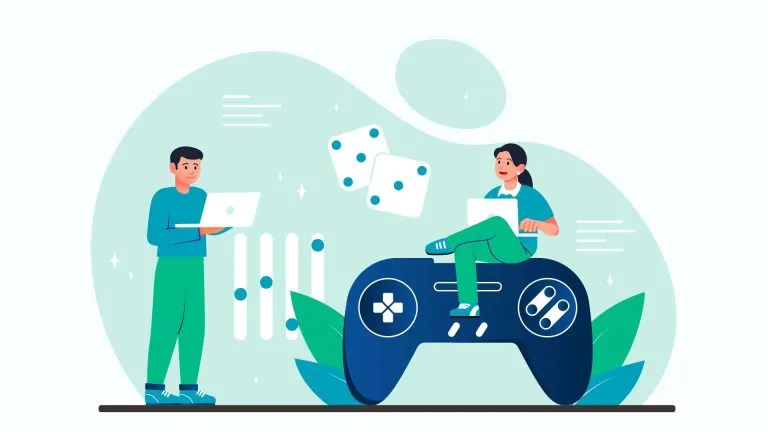Hunicke’s MDA Framework in Microlearning Game Design: Enhancing Engagement and Effectiveness
In today’s fast-paced digital learning landscape, microlearning has emerged as a powerful tool to deliver concise, engaging, and effective training experiences. However, designing microlearning content that is both educational and engaging can be challenging. This is where Hunicke’s MDA (Mechanics, Dynamics, Aesthetics) Framework plays a crucial role. Originally developed for game design, the MDA framework provides a structured approach to crafting immersive learning experiences that captivate and retain learners’ attention.
In this article, we will explore how the MDA framework can be applied to microlearning game design, enhancing learner engagement, motivation, and knowledge retention.
Understanding Hunicke’s MDA Framework
The MDA framework, created by Robin Hunicke, Marc LeBlanc, and Robert Zubek, breaks down game design into three interconnected components:
- Mechanics – The rules, algorithms, and systems that define the core functionality of the game.
- Dynamics – How the mechanics interact with each other and influence the player’s experience over time.
- Aesthetics – The emotional responses and overall experience created by the game.
When applied to microlearning, this framework helps instructional designers create engaging training modules that go beyond passive consumption of information.
Applying the MDA Framework to Microlearning Game Design
1. Mechanics: Structuring Learning Through Rules and Systems
Mechanics are the foundation of a learning experience, determining how content is delivered, how learners interact with it, and how progression occurs. In microlearning game design, mechanics should be structured to promote active participation, problem-solving, and knowledge application.
Key Microlearning Mechanics:
- Interactive Quizzes – Challenge learners with scenario-based or adaptive quizzes.
- Progressive Unlocking – Learners advance through levels as they master content.
- Time-Based Challenges – Encourage quick thinking and retention through time-bound tasks.
- Points and Rewards – Implement gamified incentives like badges, leaderboards, and certifications.
- Branching Scenarios – Let learners make choices that influence the learning outcome, creating an immersive experience.
By carefully crafting these mechanics, instructional designers can foster engagement and motivation, ensuring learners remain invested in their training journey.
2. Dynamics: Creating Meaningful Learning Experiences
While mechanics define the structure, dynamics shape the way learners interact with them. In microlearning, effective dynamics ensure that learners remain engaged, experience flow, and feel a sense of achievement.
Key Microlearning Dynamics:
- Personalized Learning Paths – Adaptive learning that adjusts content based on performance.
- Feedback Loops – Instant feedback on quizzes and activities to reinforce learning.
- Healthy Competition – Leaderboards and team challenges that encourage friendly competition.
- Collaborative Learning – Peer-to-peer interactions and social learning features.
- Surprise & Curiosity – Unlocking new content through engaging storytelling or hidden rewards.
By designing effective dynamics, microlearning platforms can enhance motivation and drive learner engagement, making training more effective and enjoyable.
3. Aesthetics: Delivering Emotionally Engaging Learning Experiences
Aesthetics focus on how learners feel while interacting with a microlearning module. A well-designed aesthetic experience in microlearning creates curiosity, excitement, and satisfaction, leading to better retention and application of knowledge.
Key Microlearning Aesthetics:
- Storytelling & Narratives – Immersive storytelling makes learning more relatable and memorable.
- Visual & Audio Elements – Engaging graphics, animations, and sound effects enhance learner experience.
- Thematic Learning – Designing learning modules with themes (e.g., space missions, detective mysteries, or adventure quests) adds fun and engagement.
- Sense of Accomplishment – Certifications, trophies, and progress bars visually represent learner success.
By aligning the aesthetic elements with the learning objectives, instructional designers can create emotionally engaging microlearning experiences that resonate with learners.
Case Study: MDA in Action in Microlearning
Let’s take an example of a cybersecurity microlearning module designed using the MDA framework:
- Mechanics: Learners progress through a series of cybersecurity challenges, earning points and badges for correct answers. Each challenge includes a real-world security scenario requiring decision-making.
- Dynamics: Adaptive difficulty adjusts based on performance, ensuring the learner is neither overwhelmed nor bored. Learners compete with peers on a leaderboard, encouraging engagement.
- Aesthetics: The module is designed as a hacker defense mission, with an immersive storyline, visually engaging interfaces, and sound effects that enhance excitement.
By structuring the module using the MDA framework, learners stay motivated, engaged, and actively involved, leading to higher knowledge retention and application of learning.
Why MDA is Essential for Microlearning Success
The traditional approach to learning often relies on passive content consumption, which leads to low retention rates. By leveraging the MDA framework, microlearning platforms can:
✅ Increase learner motivation through interactive and engaging game mechanics.
✅ Improve retention by reinforcing learning with effective feedback loops.
✅ Enhance real-world application through scenario-based and decision-making activities.
✅ Foster a sense of accomplishment with gamified incentives and progression tracking.
How MaxLearn Implements the MDA Framework in Microlearning
MaxLearn’s microlearning platform is designed with the MDA framework at its core. By incorporating gamification elements like interactive scenarios, adaptive learning, and engaging aesthetics, MaxLearn ensures that learning is not just informative but also immersive and motivating.
MaxLearn’s Key Features Aligned with MDA:
- Mechanics: AI-driven assessments, bite-sized lessons, and gamified challenges.
- Dynamics: Personalized learning paths, real-time feedback, and social learning features.
- Aesthetics: Visually appealing course designs, storytelling elements, and gamified rewards.
By aligning these elements with the principles of the MDA framework, MaxLearn provides a next-level learning experience that drives engagement, retention, and performance improvement.
Final Thoughts
The MDA framework offers a structured approach to creating impactful microlearning experiences that are engaging, interactive, and effective. By integrating mechanics, dynamics, and aesthetics into microlearning game design, organizations can enhance learner motivation, improve retention, and maximize training effectiveness.
MaxLearn’s gamified microlearning platform leverages the power of MDA to transform learning into an exciting, interactive, and results-driven experience. Whether you’re designing corporate training, compliance courses, or skill development programs, embracing MDA will ensure your microlearning strategy is engaging and effective.
👉 Ready to experience the power of gamified microlearning? Explore MaxLearn today!
